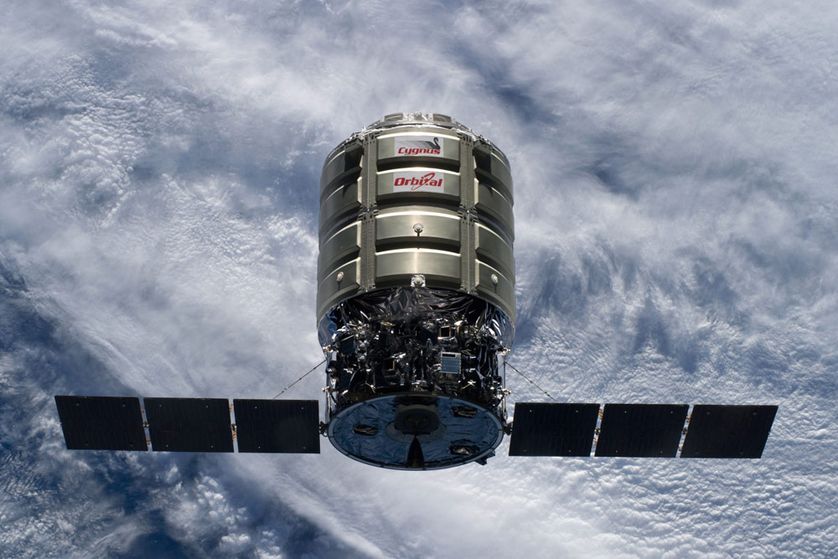NASA’s recent activity burns holes in the old expression “don’t play with fire.” Fires are a great risk for astronauts, which is why NASA is conducting studies to observe how they behave in long duration microgravity environments and how to go about extinguishing them. Other key concerns were the level of combustibility certain materials contained, the manner and speed at which fire spreads as well as by what degree temperature levels rise in such an environment.
NASA and Orbital ATK had established a commercial resupply services-1 (CRS-1) contract stipulating that the American aerospace manufacturing company send around 3,600 kg of cargo on the Cygnus shuttle to the International Space Station. After completing an 81-day stay at the Unity module berthing port of the ISS, Cygnus was unberthed and sent to Earth carrying between 1,854 and 2,200 kg worth of items for disposal.

A three-part experiment intended to be conducted over the course of three flights of Orbital ATK’s Cygnus vehicle. Saffire-I was launched from Cape Canaveral Air Force Station’s Space Launch Complex 41 in Florida, March 22, 2016, inside the S.S. Rick Husband Cygnus upon a United Launch Alliance Atlas V 401 rocket. Scientists had to wait until the OA-6 cargo resupply mission had come to an end before embarking on their pyro-related studies.
The parameters of the closed box experiment were approximately 0.5 meters wide by 1 meter deep by 1.3 meters long consisting of a flow duct and avionics bay. The cotton-fiberglass blend burn sample measured 0.4 m wide by 1 meter long and was located inside the flow tube. Once the Saffire-I was a safe distance from the orbiting outpost, the experiment was then conducted. The material burned in a recorded time of eight minutes. Cameras and sensors documented the flame’s growth rate and final size.
.@NASAGlenn will light a fire inside @OrbitalATK #Cygnus tomorrow after station release for @ISS_Research.https://t.co/b0KP9c391u
— International Space Station (@Space_Station) June 13, 2016
Orbital ATK has had plenty of studies to back up its mission
The study took place on Tuesday, June, 14, during the afternoon with ground control engineers at Orbital ATK’s facilities in Dulles, Virginia, assisting with supervision. The fire itself was ignited using a hot wire.
Once the 25 Gbits of data including over 20,000 pictures were captured, the Cygnus continued to orbit the Earth for about six to eight days, transmitting the high-resolution imagery and findings from the Saffire experiment. Then on Wednesday, June 22, it was commanded to deorbit when it re-entered the Earth’s atmosphere in a destructive manner over the Pacific Ocean, east of New Zealand.
This marked the final phase of the OA-6 mission where astronauts had previously installed the Reentry Breakup Recorder with Wireless Sensors (REBR-W) equipped with a GPS module, gyroscope, pressure, temperature and acceleration sensors, battery and Iridium communications data on the Cygnus shuttle to study spacecraft behavior during atmospheric reentry and breakup.
The Advanced Exploration Systems (AES) Division of NASA’s Human Exploration and Operations Mission Directorate, a leader in new approaches for rapidly developing prototype systems caters critical capabilities. AES works operational concepts for future human-boarded missions beyond low-Earth orbit, sponsored the Saffire experiments and the NASA Glenn Research Center by the Spacecraft Fire Safety Demonstration Project developed them.
The S.S. Alan Poindexter will see the launching of Saffire-II in August this year. It will be comprised of the same dimensions, except this time around instead of using one big sample, it will be split into nine smaller ones, each with a different material.
Saffire-III will initiate the OA-7 Cygnus’ first mission flying out at a later point in the year
Experiments observing and recording pyro activity in zero gravity are of paramount importance because fires behave differently in environments that do not possess the same properties as Earth. Scientists already know how fires behave in spaces such as buildings, planes or cars but have yet to understand how they react in space shuttles traveling in long duration microgravity.
The only other experiments of such a nature involved a flame no bigger than an index card. Thus, scientists are determined to find out how to avoid and control larger flames in microgravity environments, which will act as guidelines when constructing shuttles about what materials should be used, their size, weight, and so forth. Furthermore, it may reduce life-threatening cases where fires ignite aboard the station.
https://twitter.com/rhtkth/status/743929299271581697
Scientists have made great progress with regards to space exploration and it is due to their research, observations and data collection that there is more knowledge than ever on the happenings outside of the comfort of the Earth’s atmosphere.
Source: Spaceflight Insider
